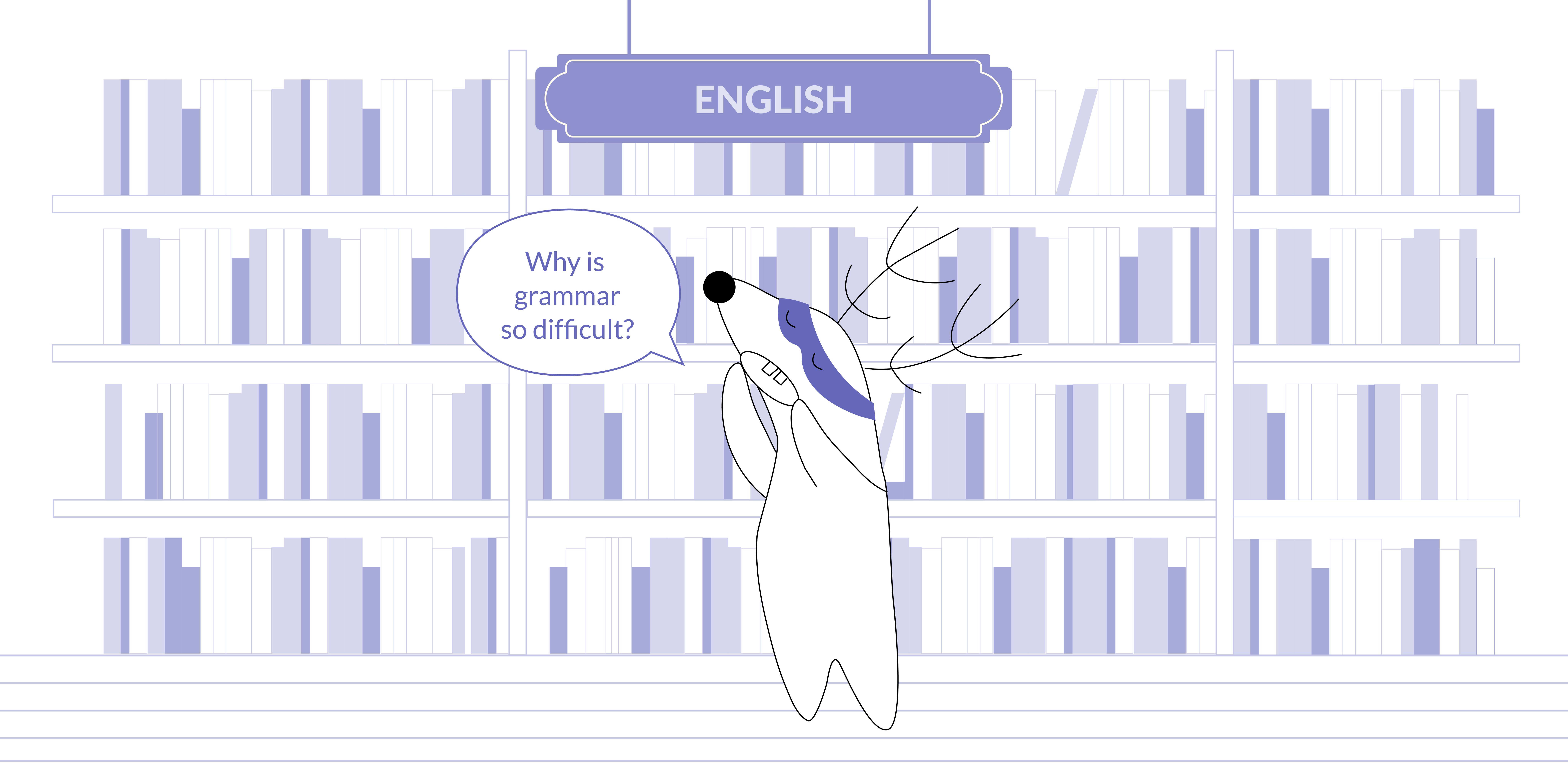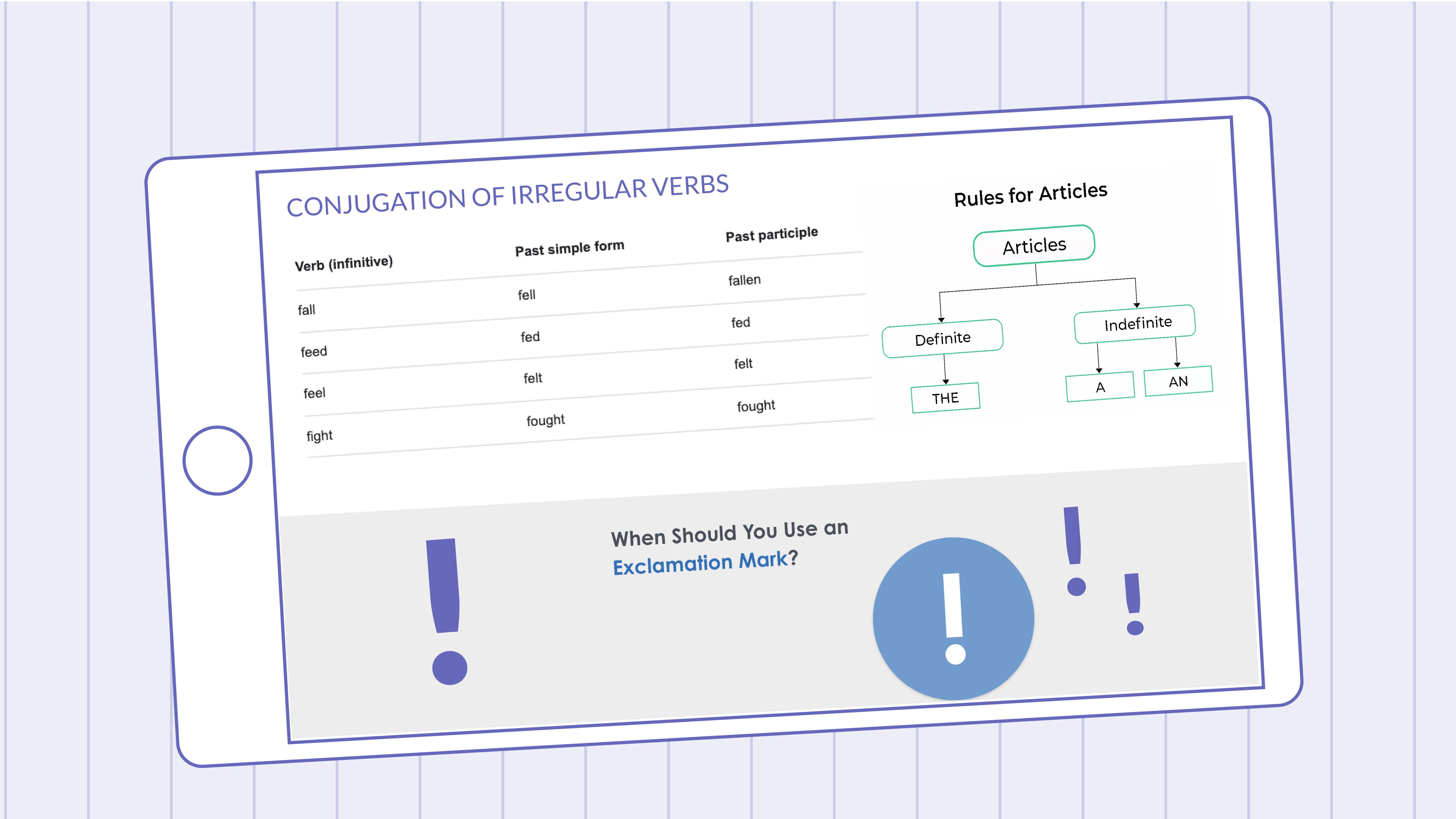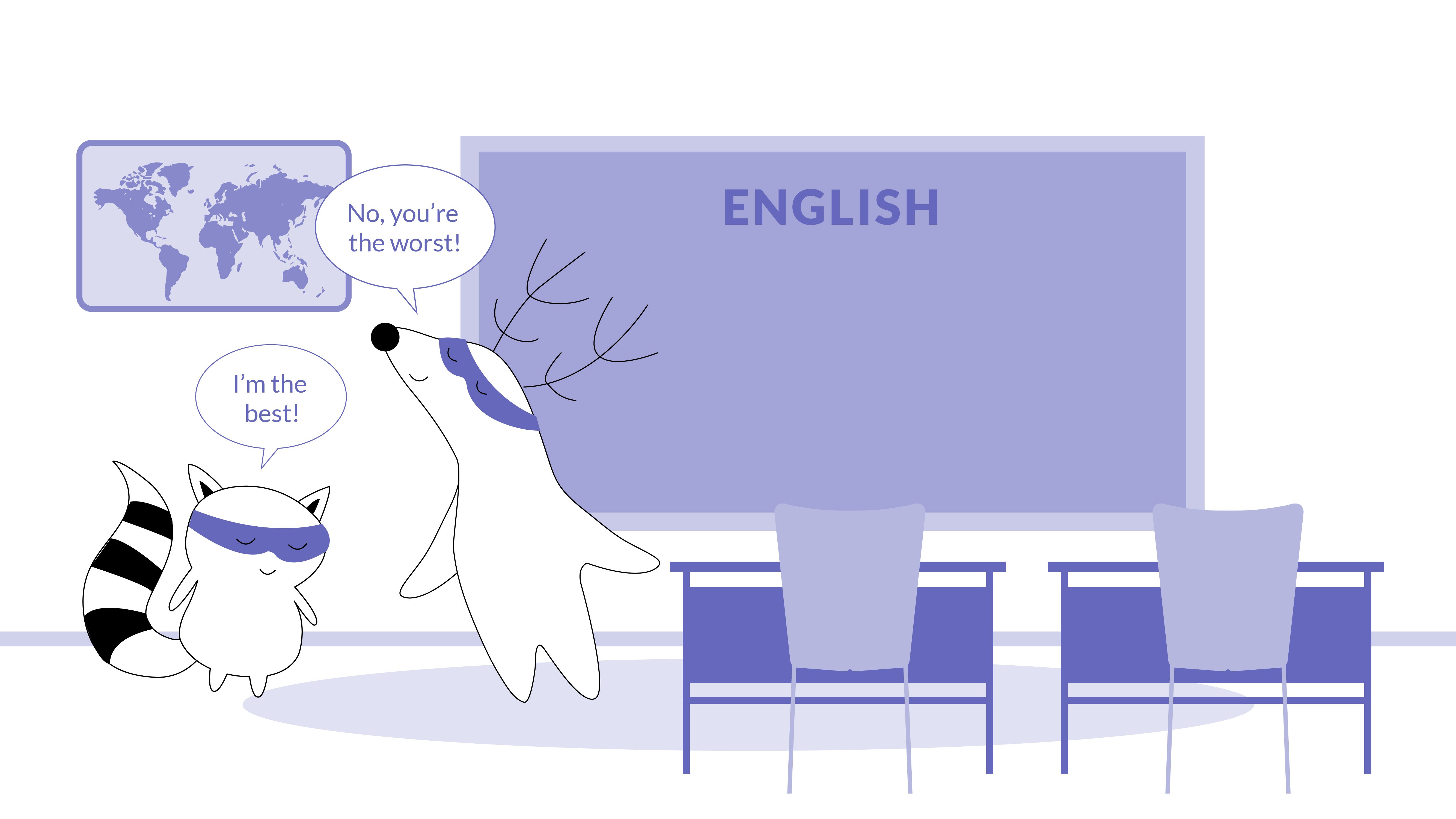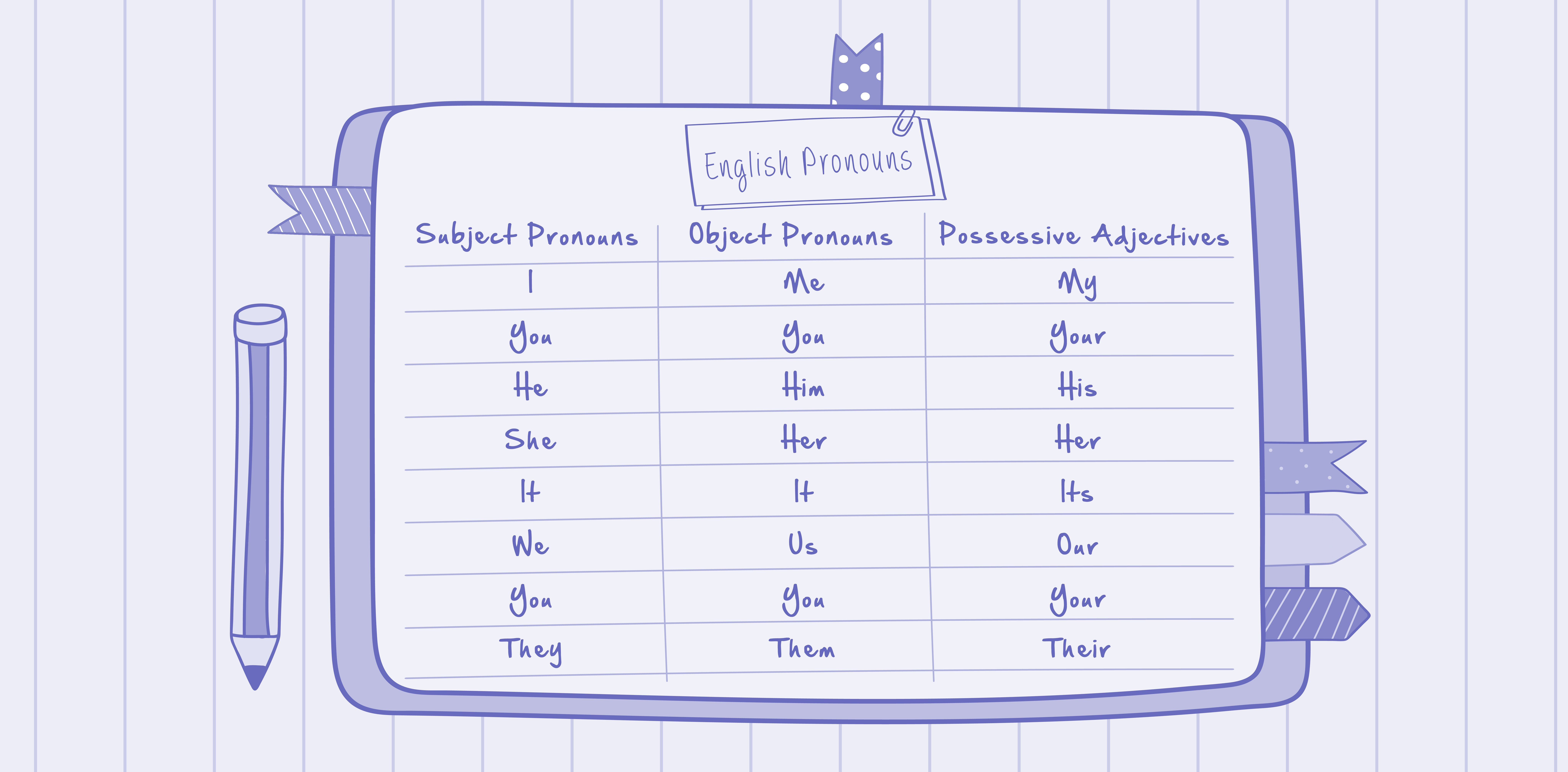
English grammar is like the secret sauce to speaking and writing perfectly – it helps the conversation flow seamlessly so you can express yourself with confidence.
However, the grammar system entails much more than just the structure of nouns and verbs. When to use an exclamation mark or a question mark is as much a part of grammar as the rules to conjugate verbs in the present tense.
So, are you ready to dive into the world of English grammar and become a master of the language? If so, you're in luck, because we're about to cover the fundamentals of English grammar.
We're going to cover everything you need to know about the building blocks of the language, from the basics of word order to the nitty-gritty details of verb conjugation. So, grab a cup of coffee, put your grammar hat on, and let's get started!
Learn English with Langster
The Five Most Important Elements of English Grammar
English grammar can often seem overwhelming, but mastering its fundamental elements can greatly improve your writing and communication skills, helping you achieve proficiency.
From proper sentence structure to the correct use of punctuation, these key elements form the foundation of the English language. So, whether you're a new language learner or simply want to brush up on your grammar, keep on reading!
1. Word Order
Word order is one of the fundamentals of English grammar, because it greatly determines the meaning of a sentence. For example, word order can determine whether an utterance is a sentence or a question.
In English, the most common word order is: subject-verb-object: "I love chocolate." Saying "Chocolate I love" is possible, but it's uncommon and can lead to confusion.
An Analytic Language
English is referred to as an "analytic" language in terms of syntax. Its meaning is primarily conveyed through word order and function words like articles, prepositions, and auxiliary verbs, instead of inflection (modifying a word's form to show tense, mood, etc.).

In English, sentences are constructed using a subject, verbs, and objects. The relationships between these components are conveyed with the use of function words, rather than by altering the form of the words themselves. This distinguishes it from "synthetic" languages, which rely more on inflection to express meaning (such as Latin).
Some Examples:
As stated above, word order is crucial for sentence structure and conveying meaning. Let's have a look at the following examples:
- My friend, Maria, is reciting a poem by Whitman.
- Maria, my friend is reciting a poem by Whitman.
As you can see, in these examples, the speaker is using the exact same words and grammar rules, but the meaning is very different. The only thing that changes is word order.
2. Singular & Plural Forms
In the English language, nouns and adjectives have singular and plural forms. An example of a singular noun is "cow" while a plural noun is "cows."
Nouns, adjectives, and articles must agree in number with the noun they modify. For example, in English, we say "the cat is hungry," while the plural would be "the cats are hungry."
Number agreement is important for maintaining correctness and clarity in communication, so they are crucial English grammar rules to learn when becoming fluent in the language.
Rule 1: Regular Plural
Most nouns form the plural by adding -s or -es to the end. Some examples include:
- House - houses
- Dog - dogs
- Toy - toys
Rule 2: Irregular Plural Forms
However, there are several irregular plural forms that must be learned. Let's see some examples:
- Child - children
- Foot - feet
- Mouse - mice
- Goose - geese
Rule 3: Nouns That Do Not Change Their Form
There are even some nouns that do not change their form when they become plural. Some examples include:
- Fish
- Sheep
- Glass
- Series

Adjectives
Different from other languages, adjectives do not have singular or plural forms in English. They are always singular:
- The cow is beautiful.
- The cows are beautiful.
3. Verb Conjugations
One of the most difficult things to learn when it comes to English grammar rules is verb conjugation. Understandably, remembering irregular verbs and all of the tenses can be quite challenging.
One of the things you have to learn when acquiring English grammar is tenses. Tense refers to a grammatical category that reflects the time frame in which an action takes place. This can be present, past, or future.
Here are some example sentences of how tenses can completely change the meaning:
- I am a teacher vs. I was a teacher
- She is drinking wine vs she will drink wine.
**Aspect** is another of the fundamentals of English grammar. In linguistic terms, "aspect" refers to the way in which a verb describes the nature of the action it represents.
In technical terms, it conveys the internal temporal constituency of a situation or event. There are two main aspects in English: the simple aspect, which focuses on the action itself, and the progressive aspect, which emphasizes the ongoing or continuous nature of the action.
This means we can have two different aspects in the past tense (same as in the present and future): simple and continuous.
We understand: all of these rules can be overwhelming, but with the help of a good textbook, a language app, and a lot of patience, you’ll soon be able to master them!
English Grammar Rules to Conjugate Verbs
Some basic English grammar rules to conjugate verbs include:
- Add -s in the third person singular present tense: e.g. "he talks."
- Add -ed to form the simple past tense: e.g. "he talked."
- Add -ing to form the present participle: e.g. "he is talking."
But, let's not forget about irregular verbs. Unfortunately, there are no basic rules to learn: you just need to memorize their unique conjugation patterns: e.g. "eat" (eats-ate-eating).

4- Definite and Indefinite Articles
The definite article "the" and the indefinite articles "a/an" are used to indicate a specific or non-specific reference to a noun in English. Have a look at the following example:
- "The dog barked loudly" refers to a specific, known dog (maybe your neighbor's).
- On the other hand, saying "an elephant never forgets" implies this is not a specific elephant, but a generalized statement.
General Rules to Use "The" or "A/an"
- Use "the" before a noun when you are referring to a specific thing that is known both to you and the person you're speaking to. Example: "The book on the shelf is mine."
You can also use "the" before a noun that is unique, such as "The sun rises in the east."
- Use "the" before a noun when referring to a superlative, such as "The elephant is the largest land animal."
- Use "the" before proper nouns when referring to a specific thing. Example: "The Eiffel Tower is in Paris."
- Use "a/an" before a singular countable noun when referring to an indefinite or non-specific thing. Example: "I saw a dog in the park."
There's also a rule that's not related to meaning but it's important to grasp to use perfect English grammar: Use "an" before a word that starts with a vowel sound, like "an apple."
It is important to note that there are some exceptions to these rules, and the use of the definite and indefinite articles can sometimes be more nuanced.
However, following these general rules should give you a solid foundation and a basic understanding of how to use these articles.
5- Comparatives and Superlatives
Comparatives and superlatives in English are used to compare or describe the degree or intensity of adjectives.
On the one hand, comparatives are used to compare two things and are formed by adding "er" to the end of the adjective or by using the word "more" before the adjective.
On the other hand, superlatives are used to indicate the highest degree of something among a group of three or more things. They are formed by adding "est" to the end of the adjective or by using the word "most" before the adjective.
Find more details about these grammar rules below.
Forming comparatives and superlatives
Here are the rules for forming comparatives and superlatives in English:
- Comparatives: Add "er" to the end of a one-syllable adjective, or use "more" before a two-syllable or longer adjective. Example: "hot" becomes "hotter," and "interesting" becomes "more interesting."
- Superlatives: Add "est" to the end of a one-syllable adjective, or use "most" before a two-syllable or longer adjective. Example: "hot" becomes "hottest," and "interesting" becomes "most interesting."
- "good" (comparative: "better," superlative: "best"),
- "bad" (comparative: "worse," superlative: "worst"),
- and "far" (comparative: "farther," superlative: "farthest").
When using comparatives, you can use "than" to compare two things. Example: "This book is more interesting than that one."

When using superlatives, you can use "of" to describe the greatest degree of a particular quality. Example: "This is the most interesting book of all."
It is important to note that in English, some adjectives cannot be compared, like "perfect" or "unique."
The Bottom Line
All in all, these five elements of English grammar will give you a basic framework for speaking coherent, unambiguous, fluent English. As the building blocks of grammar, they are just a start, but they will give you a strong foundation to you begin your English journey seamlessly.









